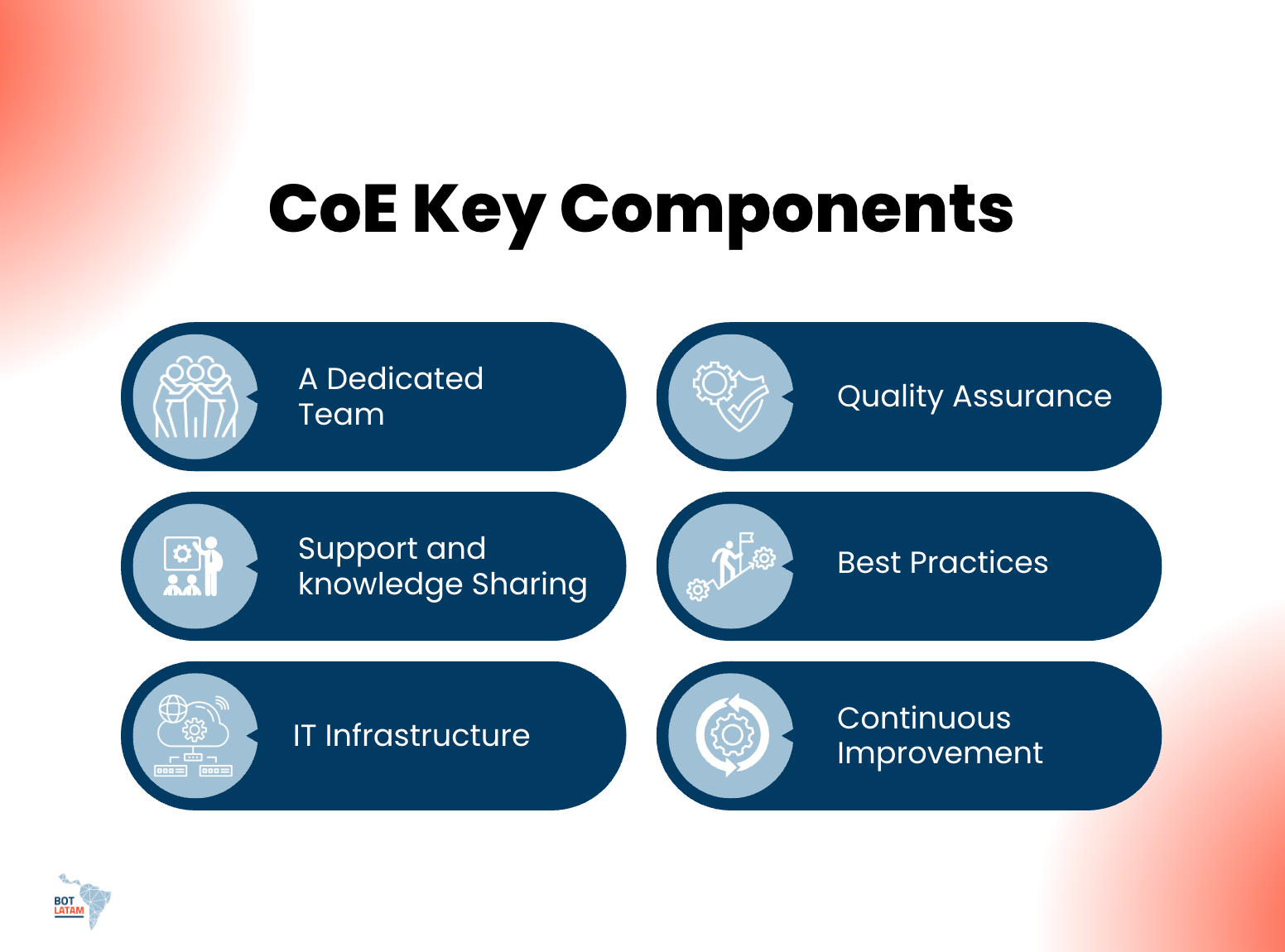Setting up a Nearshore Center of Excellence (CoE) in Uruguay is no longer just a trend, it is becoming a competitive necessity for companies looking to scale operations in Latin America. With its skilled workforce, strategic location, and business-friendly environment, Uruguay is positioning itself as a prime hub for nearshore innovation.
You will learn what a Nearshore CoE is, why Uruguay stands out in LATAM, and the steps needed to establish one successfully. We will also cover the advantages of using the Build-Operate-Transfer (BOT) model, common challenges to watch out for, and best practices for achieving long-term success.
The numbers back this up. According to the World Bank, Uruguay consistently ranks among the top countries in Latin America for political stability and regulatory quality, both of which directly impact investment security. Add in a strong talent pipeline with one of the highest internet penetration rates in the region, and you get a clear picture of why global companies are setting up operations here.
This guide walks you through everything you need to know to set up a Uruguay CoE that drives value today and positions your business for growth tomorrow.
What Is a Nearshore Center of Excellence (CoE)?

A Nearshore Center of Excellence (CoE) is a specialized unit that consolidates skills, technology, and processes in a single location to deliver expertise at scale. Instead of spreading operations across multiple fragmented teams, a CoE centralizes best practices and provides a framework for consistent performance.
In a nearshore setup, the CoE operates in a country geographically close to the company’s headquarters. This proximity means overlapping time zones, easier communication, and faster collaboration compared to offshore alternatives. For example, companies in the United States benefit from setting up a CoE in Latin America, where work hours align more naturally and travel times are shorter.
The primary function of a Nearshore CoE is to become the knowledge hub for specific capabilities. These can include software development, IT support, data science, or even specialized functions like cybersecurity. By concentrating talent and resources in one place, you create a system that accelerates problem-solving and reduces inefficiencies.
Global research highlights why CoEs matter. A report by Deloitte found that organizations with established CoEs improve project efficiency by up to 25%, thanks to streamlined processes and centralized expertise. This isn’t just about lowering costs, it is about building long-term operational resilience.
A Nearshore CoE also plays a strategic role in innovation. By standardizing methodologies and leveraging shared technology platforms, you can introduce new tools and practices more quickly across the organization. That consistency drives measurable business outcomes, from shorter product development cycles to improved service quality.
In short, a Nearshore CoE is not just an operational outpost. It is the anchor point for expertise, process excellence, and regional growth, making it a powerful model for companies that want scalability without sacrificing agility.
Why Uruguay Is Emerging as a Nearshore Center of Excellence
1. Strategic Location and Time Zone Alignment
Uruguay offers a geographic advantage that makes collaboration seamless. For U.S. companies, workday hours overlap almost entirely with teams in Montevideo, minimizing delays and avoiding late-night or early-morning calls. This alignment accelerates decision-making and helps projects move faster than with offshore setups in Asia or Eastern Europe.
2. Strong Talent Pool and Digital Skills
Uruguay has one of the highest percentages of tertiary education enrollment in Latin America, with over 64% of young adults pursuing higher education according to UNESCO. The country is especially strong in STEM fields, producing a steady pipeline of software engineers, IT specialists, and data professionals. Uruguay also ranks among the top in LATAM for English proficiency, according to the EF English Proficiency Index, lowering communication barriers.
3. Stable Political and Economic Climate
Consistency is one of Uruguay’s biggest selling points. The World Bank ranks Uruguay as the most politically stable country in Latin America, giving businesses confidence in long-term planning. Strong institutions and transparent legal frameworks reduce risk, which is critical when investing in a nearshore CoE.
4. Government Support and Incentives
Public policy actively supports tech-driven initiatives. The Uruguayan government provides tax exemptions and free-trade zones for IT and innovation services, lowering operational costs for foreign companies. Programs like the Uruguay XXI investment promotion agency also facilitate business expansion, streamlining entry into the local market.
5. Advanced Digital Infrastructure
Uruguay leads the region in connectivity. With fiber optic coverage reaching more than 85% of households, according to URSEC, the country has some of the fastest and most reliable internet in Latin America. This infrastructure supports uninterrupted operations for CoEs that depend on high-speed data and cloud-based platforms.
6. Growing Tech Ecosystem in Montevideo and Beyond
Montevideo has become a recognized hub for startups, IT firms, and global service providers. The software industry accounts for over 2% of Uruguay’s GDP, and exports reach more than 50 countries. This thriving ecosystem creates a collaborative environment where knowledge-sharing is common and innovation cycles are accelerated.
7. Cultural Affinity With North America and Europe
Uruguayan professionals often share similar work styles and values with counterparts in the U.S. and Europe. Cultural alignment reduces friction in collaboration, making integration smoother than in many offshore destinations. This cultural closeness is a subtle but critical factor when building a nearshore CoE.
Steps to Set Up a Nearshore CoE in Uruguay
1. Define the Objectives and Scope of Your CoE
Start with a clear purpose. Determine whether the CoE in Uruguay will focus on software engineering, IT operations, data analytics, or a mix of capabilities. Define measurable goals such as reducing time-to-market or improving service quality. Without a clear scope, CoEs risk becoming decentralized cost centers instead of strategic assets.
2. Select the Right Location in Uruguay
Most companies choose Montevideo, which concentrates talent, infrastructure, and connectivity. However, secondary cities like Punta del Este and Salto are seeing tech-driven growth. Consider proximity to universities, quality of local infrastructure, and access to coworking spaces or tech parks.
3. Establish a Legal and Compliance Framework
Uruguay has favorable laws for foreign investment, but setting up requires navigating tax structures, labor codes, and possible free-trade zone benefits.
4. Recruit and Retain Skilled Talent
Talent acquisition is the backbone of any nearshore CoE. Uruguay graduates over 5,000 STEM professionals annually, according to UNESCO, creating a solid pool of candidates. Use partnerships with local universities and industry associations like CUTI to tap into this pipeline. Competitive compensation and professional development programs help retain top performers in a market where demand for IT talent is rising.
5. Implement Scalable Processes and Governance
From the start, establish governance models that define reporting lines, performance metrics, and accountability structures. Use frameworks like ITIL for service management or Agile for development cycles.
6. Invest in Digital Infrastructure and Security
A CoE cannot operate at scale without reliable infrastructure. Uruguay offers robust internet speeds and a growing number of Tier III data centers. Ensure your setup includes secure cloud environments, strong cybersecurity protocols, and backup systems. This foundation reduces downtime and builds resilience for mission-critical operations.
7. Foster Knowledge Transfer and Continuous Learning
A CoE should not operate in isolation. Set up mechanisms for knowledge sharing between teams in Uruguay and the headquarters. Encourage training programs, certifications, and innovation labs to keep skills current. This approach ensures your Uruguay CoE evolves alongside global business needs instead of stagnating.
Leveraging the BOT Model for a Uruguayan CoE
Understanding the BOT Model in Nearshore CoEs.
The Build Operate Transfer (BOT) model is a structured approach to setting up a Nearshore Center of Excellence in Uruguay. In this framework, a partner builds the CoE, manages daily operations, and eventually transfers ownership to your organization. It reduces upfront risks, accelerates setup, and ensures smoother integration once the CoE transitions to full control.
Why the BOT Model Fits Uruguay’s Business Climate.
Uruguay’s regulatory transparency and political stability make it ideal for BOT structures. According to the World Bank’s Governance Indicators, Uruguay consistently scores above the 80th percentile in regulatory quality and political stability. This environment lowers uncertainty when transferring ownership, a phase that often carries the most risk in other regions.
Reducing Time-to-Value With BOT in Uruguay.
Setting up a CoE independently can take 12–18 months. With a BOT model, you can often reach operational maturity in less than a year, since the partner already has infrastructure, HR networks, and compliance frameworks in place. This acceleration means your Uruguay CoE begins delivering measurable results faster.
Risk Mitigation in the Transfer Phase.
The transfer stage can disrupt if not handled carefully. With BOT, the transition is gradual. Governance structures, documentation, and performance KPIs are built in during the operate phase, ensuring continuity once ownership shifts. This staged process reduces the risk of knowledge loss and operational downtime.
Cost Efficiency and Long-Term Value.
While BOT arrangements may initially include partner fees, they lower long-term costs by minimizing missteps in setup and recruitment. Deloitte research shows companies using BOT models in nearshore markets can reduce initial establishment costs by 20–30% compared to going solo. In Uruguay, this efficiency is further supported by tax incentives for the IT and innovation sectors.
Best Practices for Leveraging BOT in Uruguay.
To maximize results, define clear success metrics before the build phase begins. Establish joint governance with your BOT partner to align expectations. Use the operate phase to test and refine processes so that, by the time of transfer, your CoE is already functioning as an integrated extension of the business.
Ready to Set Up a Nearshore CoE in Uruguay?
Building a Nearshore Center of Excellence in Uruguay is not just about reducing costs, it’s about creating a scalable foundation for innovation, talent development, and long-term growth. With Uruguay maintaining one of the region’s highest levels of digital connectivity, the conditions are right for companies to establish operations that deliver real strategic value.
At BOT LATAM, we specialize in helping organizations set up, operate, and seamlessly transition CoEs in Uruguay and across LATAM through the Build Operate Transfer model. Our experience in talent acquisition, compliance, and operational governance ensures that businesses not only launch quickly but also sustain performance over time. By combining local expertise with global standards, we enable companies to unlock the full potential of nearshore excellence in Latin America. Ready to have your own? Contact us to know how!

Revolutionize Your Workflow with Our Innovative BOT Strategy!
Enhance your operations seamlessly and adapt to market demands
Contact Us



%2017.26.38.png)
